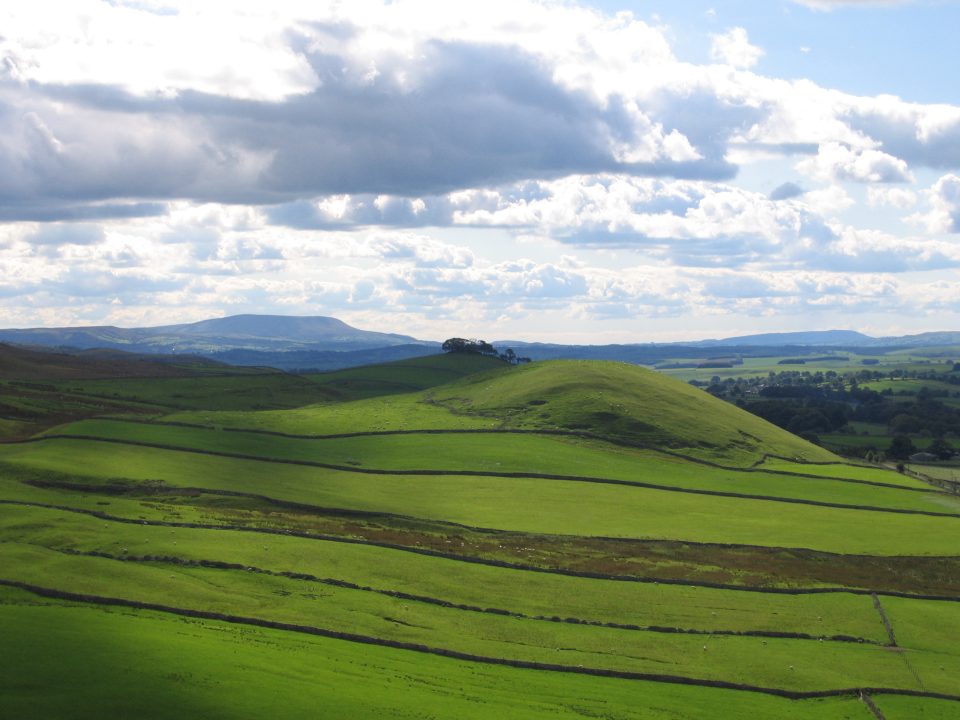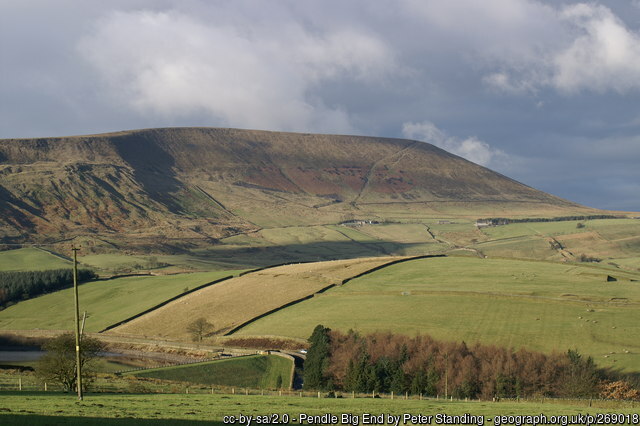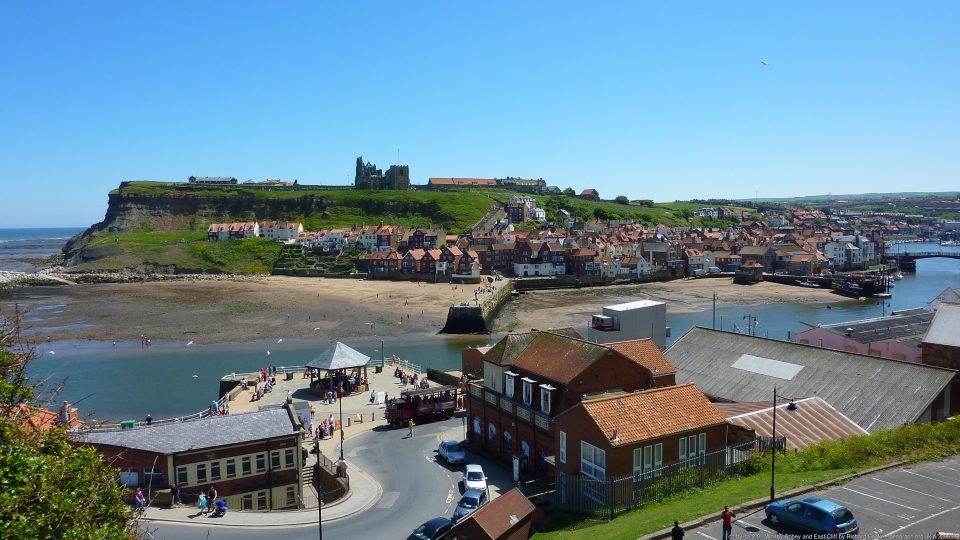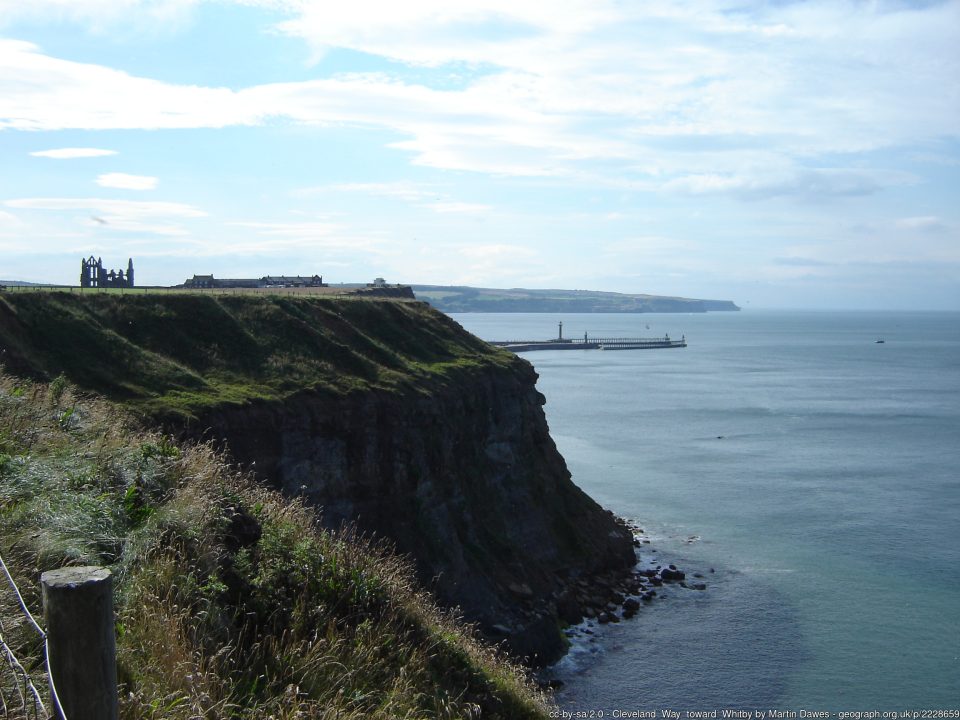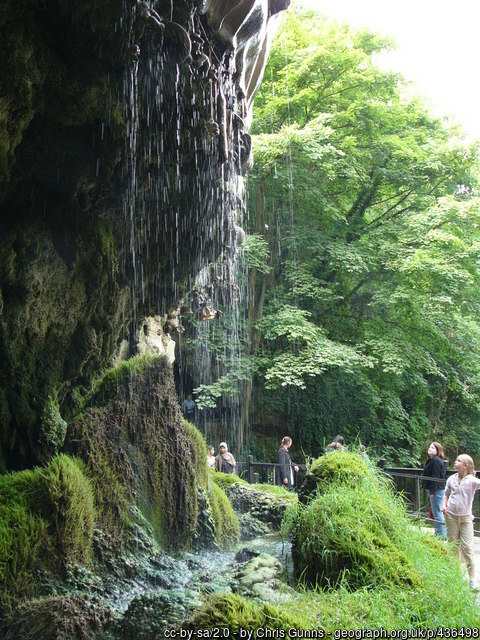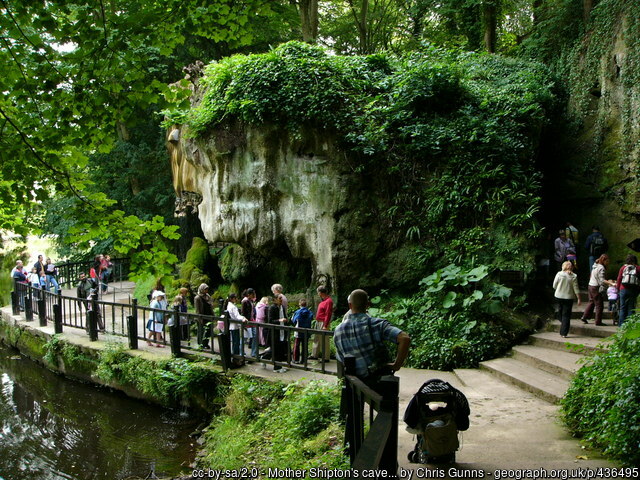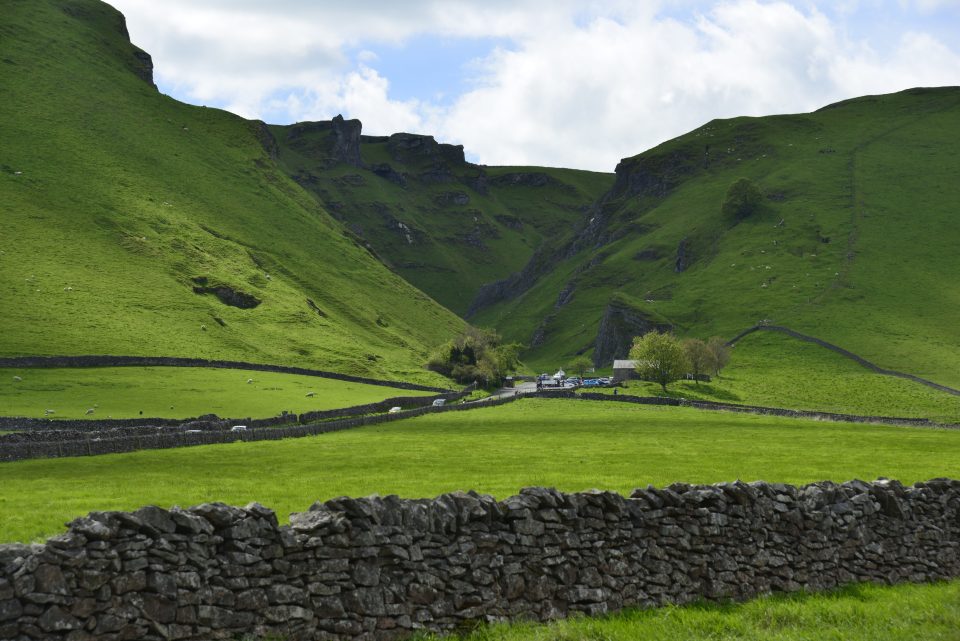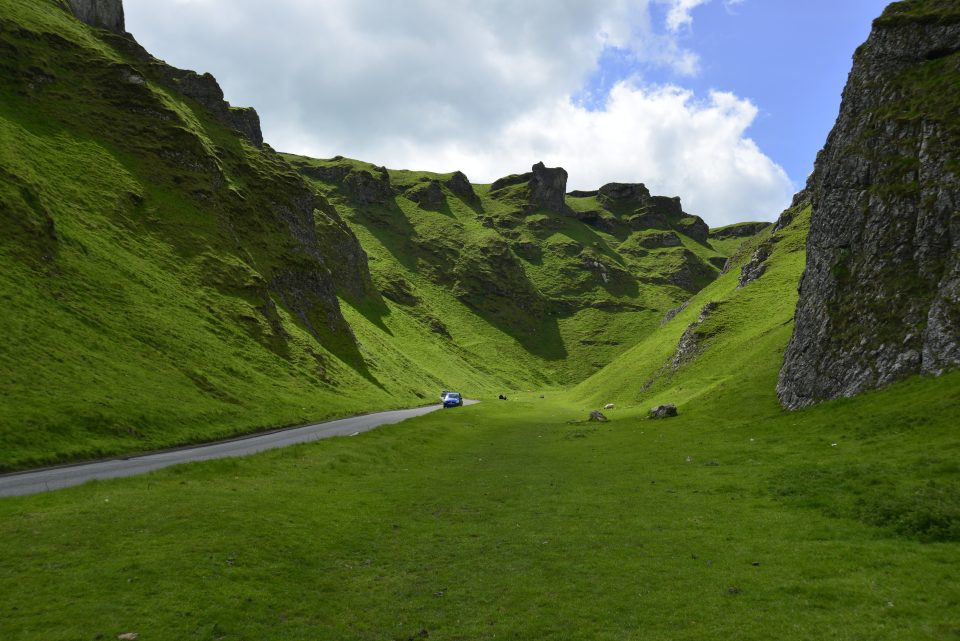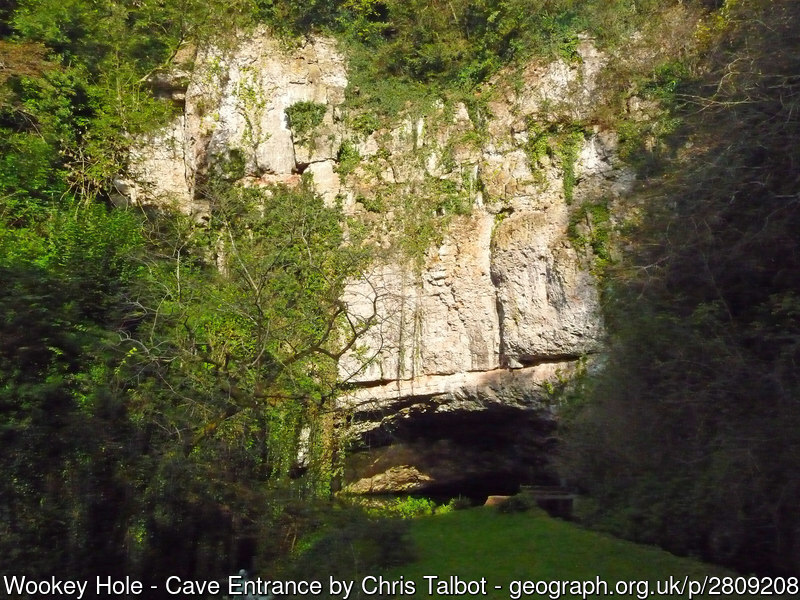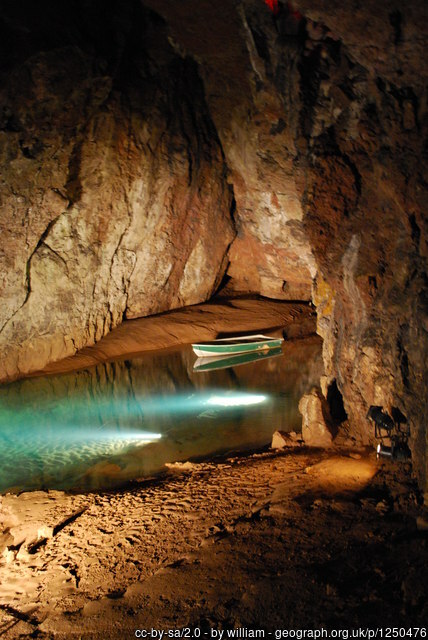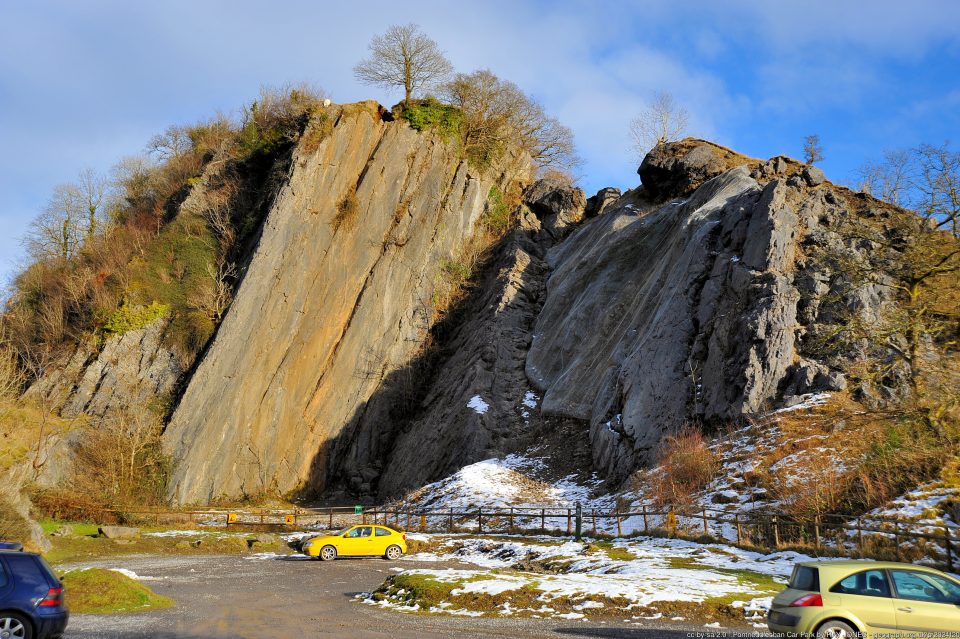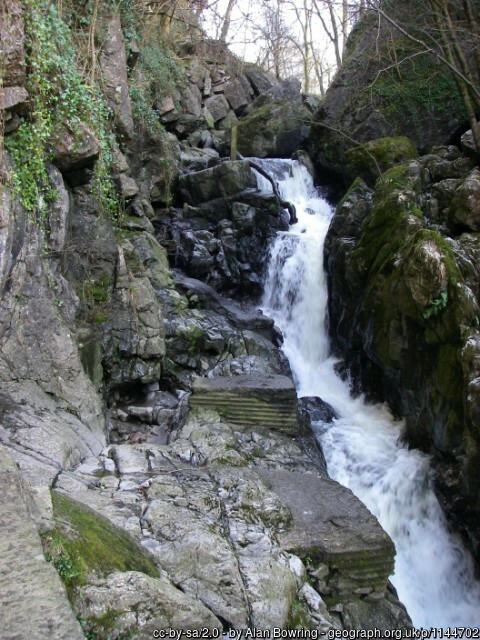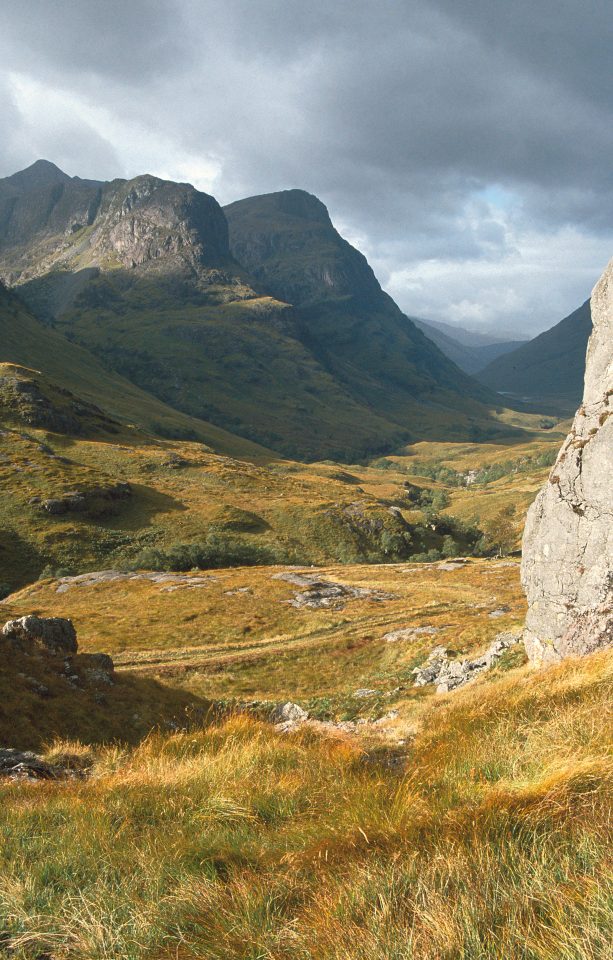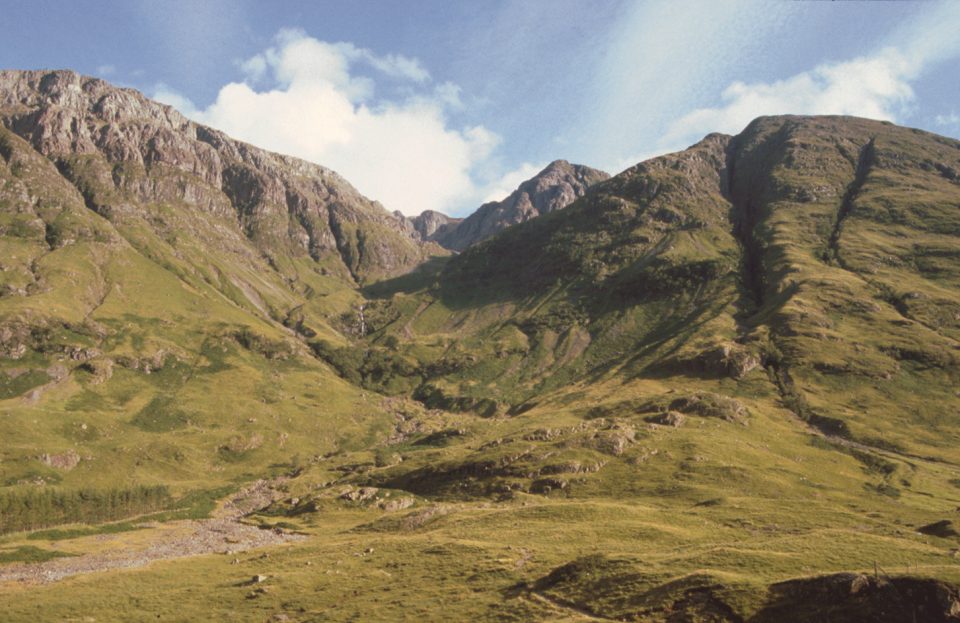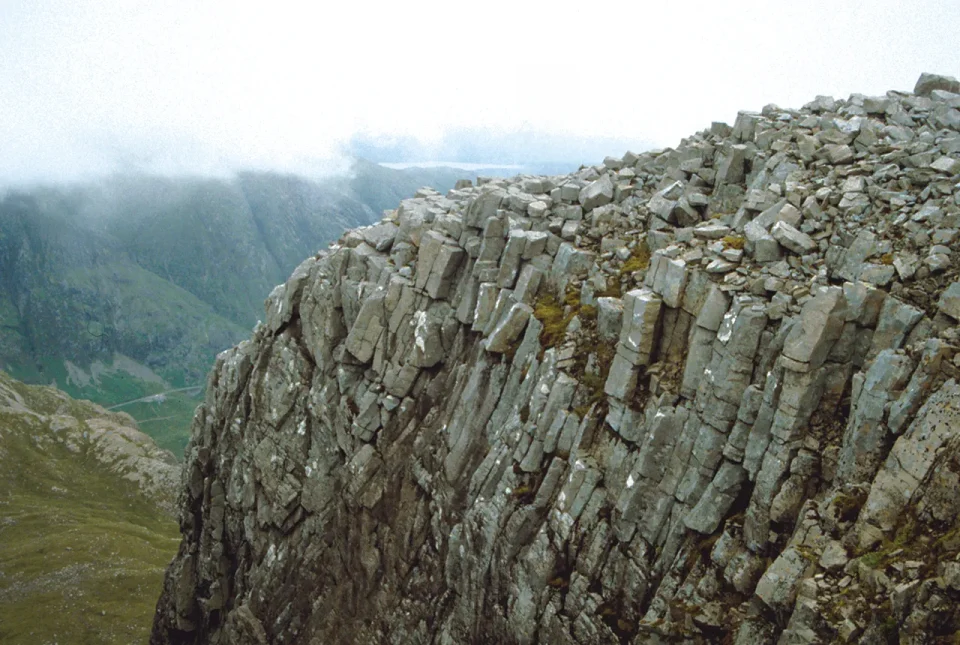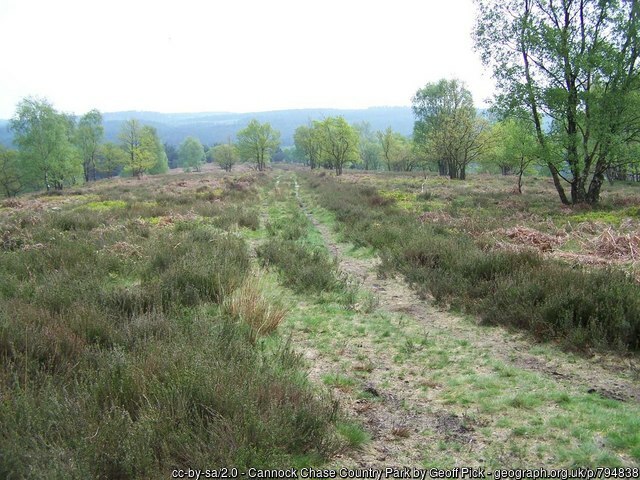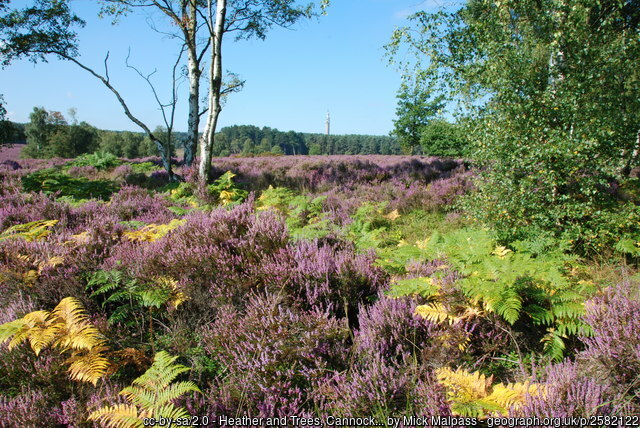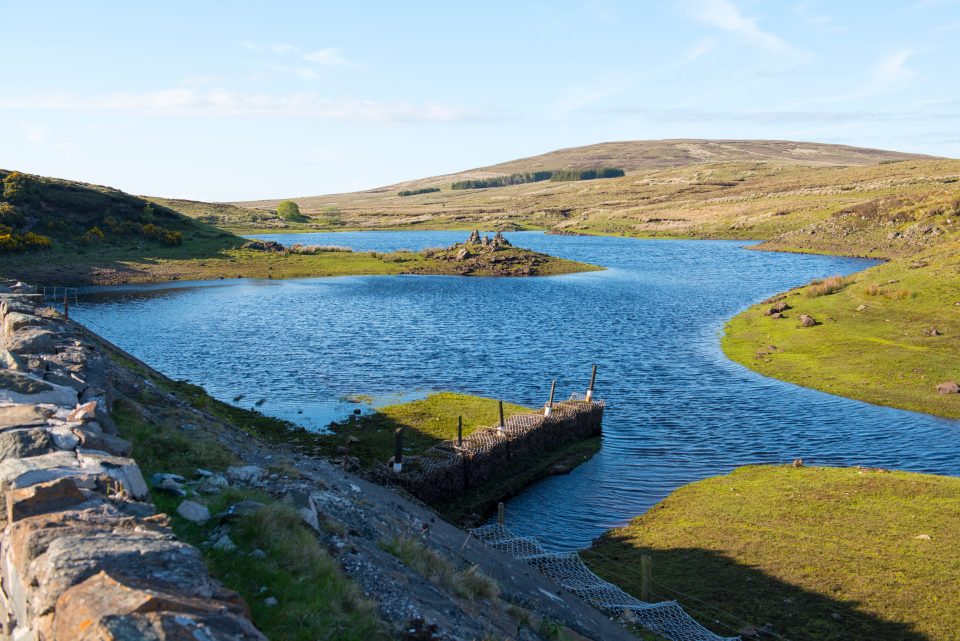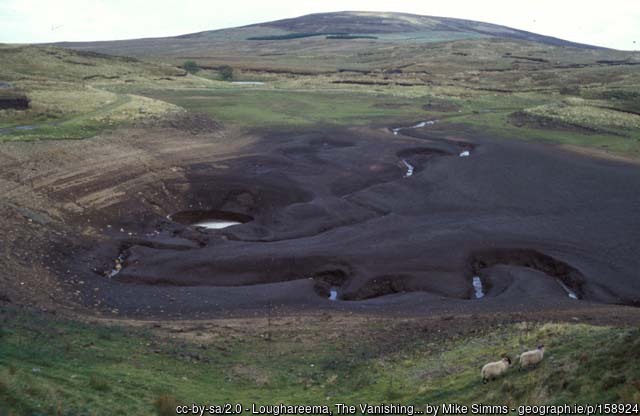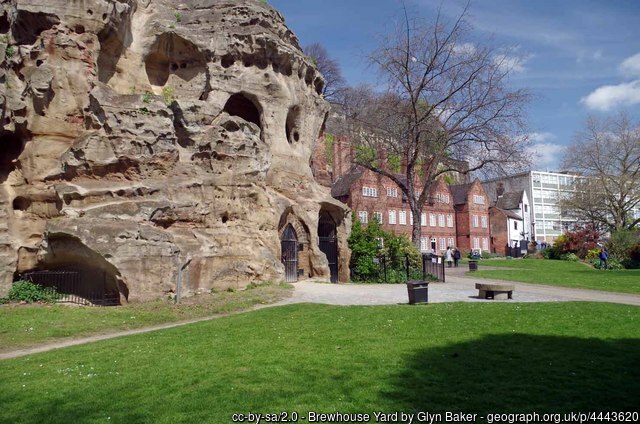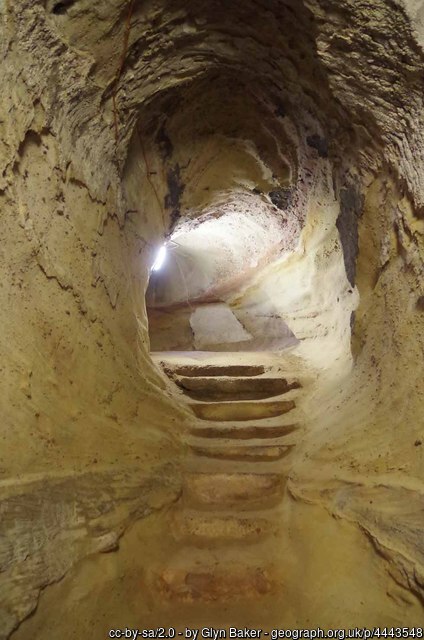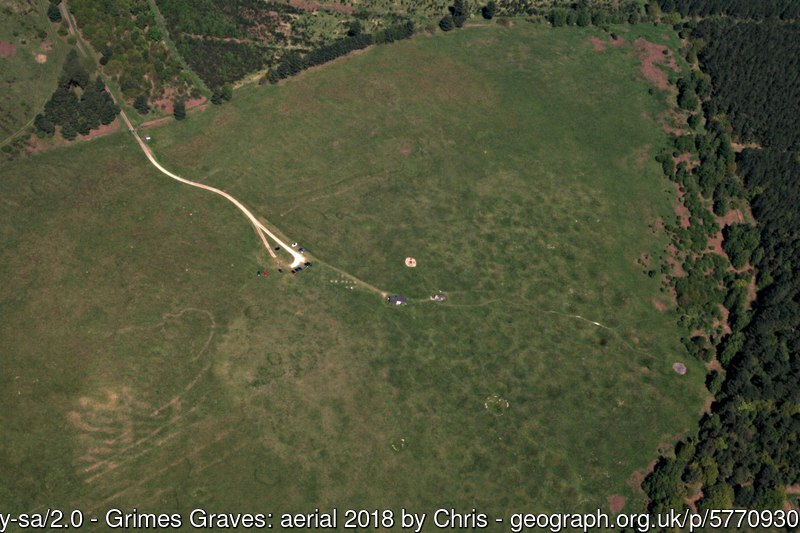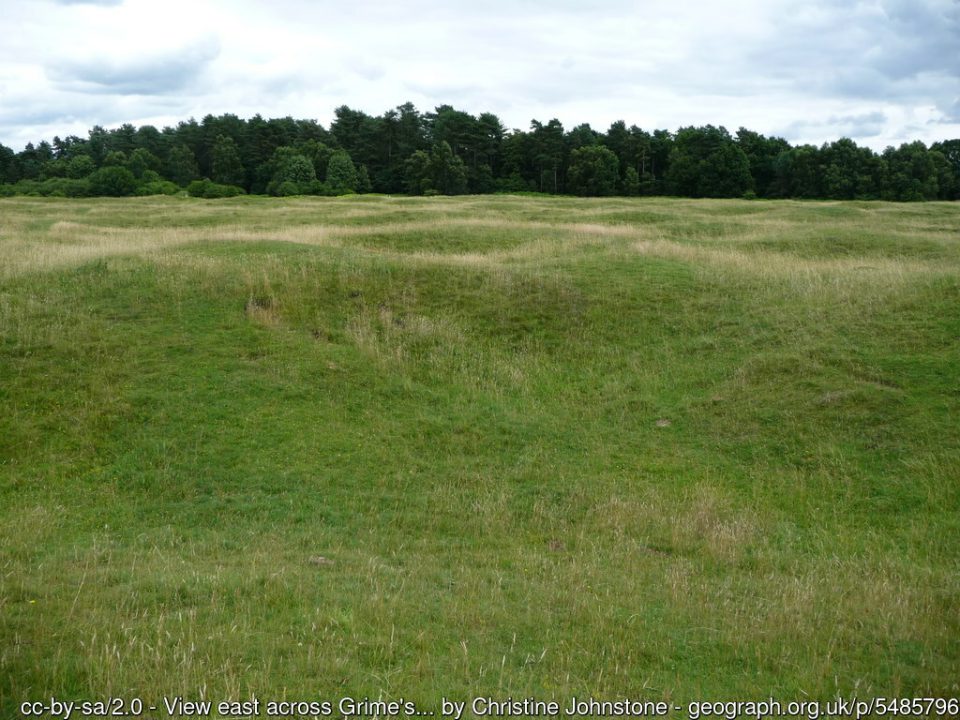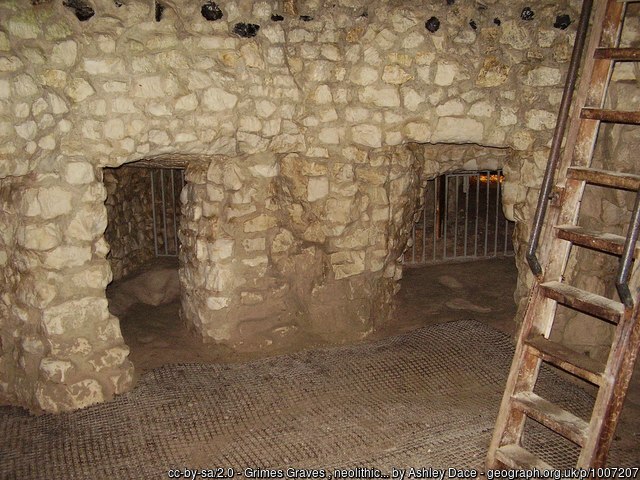Spooky geology
Explore thirteen of our favourite spooky geological hotspots around the UK.
31/10/2022 By BGS Press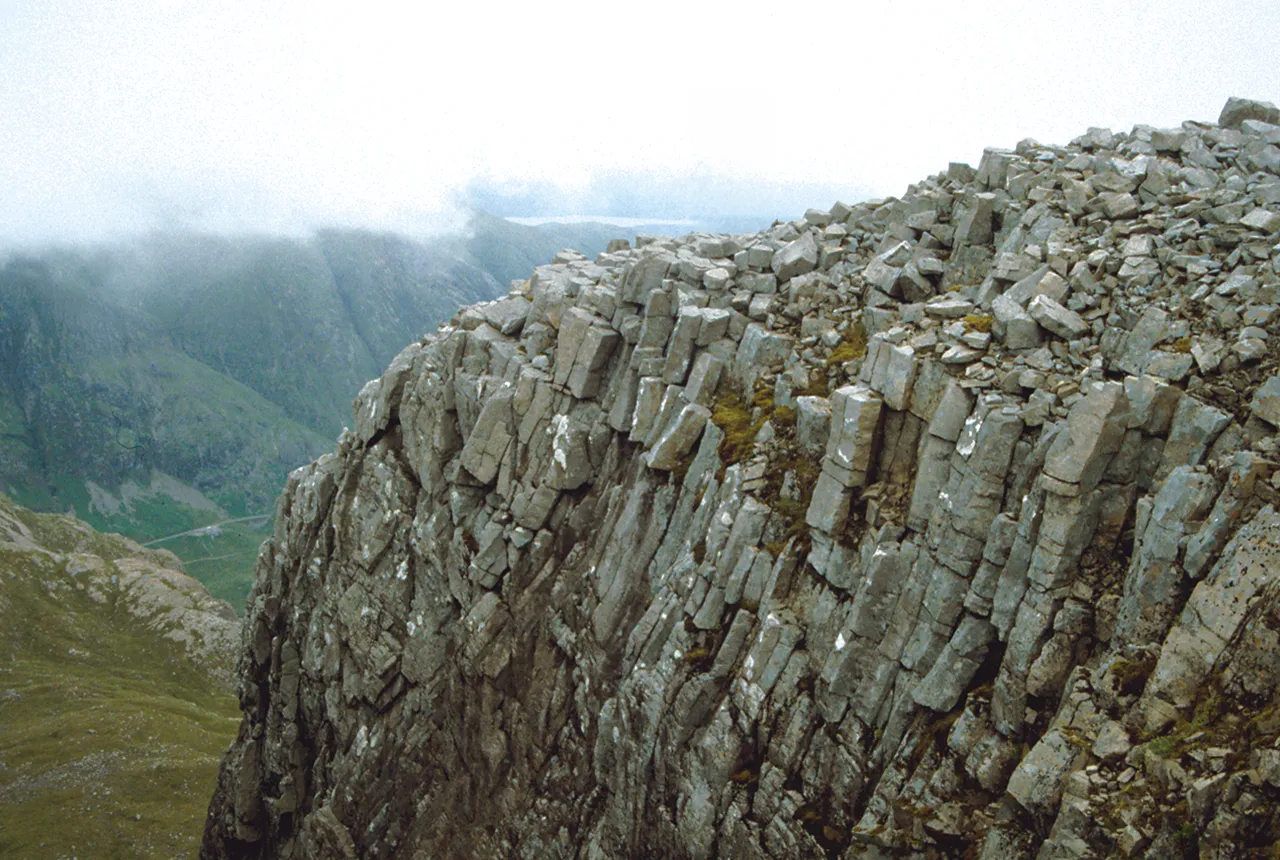
It’s a truth universally acknowledged that as much as we love rocks, geologists absolutely love a bit of folklore, especially if that lore can be tied to the ground beneath our feet. This year for Hallowe’en we’ve decided to share thirteen of our favourite spooky geological hotspots for those who like a good scare while learning something about the geology of the UK.
But be warned, what you may read in these words are not for the faint-hearted…
Pendle Hill
Perhaps one of the most famous hills in all the UK, Pendle Hill in Lancashire the site of the famous Pendle Witch Trials and the execution of ten local people. It is said that the ghosts of the Pendle witches still haunt the area and there have been many sightings of not only the witches but other spooky spectres including ghostly children and dogs.
The distinctive shape of Pendle Hill in Lancashire is created by its underlying geology. The plateau, the flat top of the hill, is formed from coarse sandstones of the Pendle Grit Member, which rests on top of limestones of the Carboniferous Limestone Supergroup, forming the steep sides of the hill. These rocks date from the Carboniferous Period and are 329 to 328 million years old. The River Ribble has eroded the limestone away, leaving the harder Pendle Grit perched on top of the hill and forming the well-known plateau shape.
Whether or not the ghosts of the Pendle witches still haunt this hill today, it is still a beautiful place to visit.
Whitby
The pretty seaside town of Whitby is located on the eastern coast of North Yorkshire and is famous for being the setting for Bram Stoker’s Dracula.
One of the town’s most famous ghosts also gets a mention in Dracula, that of St Hilda, for whom the ruined abbey located on the East Cliff is named. It is reported that St Hilda wanders the abbey and can be seen looking out from the windows. A second ghost, Constance de Beverley, also haunts the abbey, pleading for release after being imprisoned for breaking her vows of chastity.
The Whitby cliffs are composed of the mudstones, stiltstones and sandstones of the Whitby Mudstone Formation, the Dogger Formation and the Ravenscar Group, which all date from the Jurassic Period and are 174 to 168 million years old. The rocks are famous for their fossils, such as the ammonite Hildoceras, which is named for St Hilda, and deposits of the semi-precious gemstone jet, which forms from wood that has been subjected to extreme pressure.
Mother Shipton’s Cave
Ursula Southeil, or Old Mother Shipton, was a soothsayer born in this cave near Knaresborough in 1488. As a teen, Ursula could move things with her mind and imps were said to visit her, but it was her ability to see the future and found lost items that really brought her fame. In 1641, The Prophesie of Mother Shipton in the Raigne of King Henry the Eighth was published. Two later versions of the book were published, the latter including a prediction of cars, planes and even what could be imagined as the internet.
Unlike most caves in the UK, which are created by water dissolving soluble rocks such as limestone over hundreds of thousands of years, Mother Shipton’s Cave formed at the same time as the rock it’s found in. This rock, which is called tufa, is created as water that contains a high concentration of calcium carbonate emerges from a spring and deposits the calcium carbonate on the surfaces it flows over and, in the case of this cave, as it drips from overhanging rocks (which are the Permian-aged Cadeby Formation).
Besides the fascinating tale of Old Mother Shipton, the cave site also houses the Petrifying Well — said to be the oldest visitor attraction in England — which petrifies objects in just a few months as the dripping water deposits calcium carbonate over them.
Winnats Pass
Winnats Pass is the location of many a spooky tale, not least because of the eerie wind that howls along it night and day. One of the most famous stories is of Alan and Clara, a couple who were brutally murdered on their way to be married. On the night of the murder, as Alan and Clara travelled the pass, they were set upon by drunken lead miners, who brutally attacked them and stole around £35 000 in today’s money — the couple’s life savings. It’s said that the lead miners all befell horrible fates after the murders, committing suicide or losing their sanity and all their money.
Alan and Clara can now be found on dark, moonless nights wandering the pass, restless from the injustice done to them.
Winnats Pass, or ‘windy gates’, itself is a spectacular limestone gorge carved through rocks that are part of the Bee Low Limestone Formation; they are 337 to 311 million years old (Carboniferous Period) and formed from reefs in a tropical, shallow-marine environment. It used to be thought that the pass formed when a cave system collapsed, but it’s now believed that the pass was a natural canyon in the ancient reef itself that filled with sediment, which was removed by glacial and fluvial action in more recent times.
Wookey Hole
The famous Wookey Hole is a Site of Special Scientific Interest (SSSI). Although many ghosts haunt the cave, the most compelling is the Witch of Wookey Hole.
The witch, once a beautiful young woman, was living in a nearby village. She took a suitor and fell deeply in love but was quickly jilted by him in favour of another woman. Devastated, she ran away to the caves where she hid. On the night of her disappearance, she was visited by a demon who offered her great powers in exchange for her soul. She accepted and the next morning returned to curse her ex and any other lovers in the area. As time passed, she grew increasingly evil, causing problems in the village. When the villagers could no longer handle her evil acts they called on the Abbot of Glastonbury to help them.
The abbot tried to exorcise the witch and a fight between good and evil took place. Finally, the abbot prevailed by sprinkling the witch with water, turning her to stone. To add credence to the story, the remains of a woman, some goats and a round stalagmite which looked like a petrified crystal ball were found in the cave in 1912.
Wookey Hole is another unusual cave because it has formed not in limestone, as most British caves are, but in a rock known as dolomitic conglomerate. Conglomerate is a sedimentary rock made up of large pebbles and gravel that have been cemented together by, in this case, dolomite (a rock that is rich in calcium magnesium carbonate). The conglomerate here is Triassic in age (252 to 201 million years old) and part of the Mercia Mudstone Group. Dolomite is soluble and, at Wookey Hole, it has been dissolved by groundwater to create the cave. The water resurges — comes out into the open air — near the cave entrance, then flows down the Ebbor Gorge and out on to the Somerset Levels as the River Axe.
Craig-y-Dinas
Legend has it that Craig-y-Dinas is the site of many precious stones, or at least that was the promise made to a drover who met a stranger one evening as he stopped to rest after a long journey. The stranger enquired where he found his hazel-stick, telling him that the stick must have grown in a place containing treasure. Together the pair returned to the place the stick originated, Craig-y-Dinas, where the stranger told of a tale of slumbering Arthurian knights sleeping under the nearby hill. The stranger told the drover that he could enter the site and make any of its treasures his own, so long as the knights remained sleeping and he didn’t awaken them by either mixing the kind of treasure he took each visit or ringing a bell that was at the entrance to the cave. However, if these things were to happen and the knights awoke, they would ask if it was day. The drover was to reply to them: ‘It is not day, sleep thou on.’
The drover visited the cave many times, becoming rich and ever greedier, but always remembering to answer the knights with this phrase when they woke. That is, until one day, when he was leaving with more amassed treasures, the drover accidentally rang the bell. When the knights awakened he didn’t remember to give his usual reply, so they dragged him into the cave and beat him mercilessly, finally throwing him out of the cave mouth and covering it over with a stone, never to be opened again.
Dinas Rock itself is an imposing limestone cliff with an Iron Age hill fort on top, in ‘waterfall country’ on the edge of the Brecon Beacons National Park. The cliff, much loved by local climbing groups, is formed in Carboniferous-aged limestone of the Penderyn Oolite Member of the Oxwich Head Limestone Formation, which dips moderately steeply towards the north-west. Across the front of the cliff is a fault which downthrows to the south-west.
There is a small car park at Dinas Rock, which can be rather busy as there is lots to see and do in this area. A short accessible trail from the car park leads to the closest waterfalls in an area renowned for them, with other waymarked walking routes to explore other waterfalls including Sgwd yr Eira waterfall. There is also a nearby former gunpowder works to explore in the this very pretty, some say magical, area.
Glenullin
The story of Ireland’s Vampire King is so fascinating it is reported to have inspired Irishman Bram Stoker’s Dracula. In the fifth or sixth century a local chieftain, Abhartach, a powerful evil magician who was notoriously cruel to members of his tribe, died and was given a chieftain’s funeral by his subjects.
But the following day, Abhartach returned to the village demanding blood daily from his tribe. Another chieftain, Cathain, was called upon to kill Abhartach. Cathain killed Abhartach three times, but he came back to life again and again, in a fouler mood and demanding more blood each time. Not knowing what to do, Cathain turned to a holy Christian hermit for help. The hermit instructed Cathain to kill Abhartach using a sword made of yew and to bury him headfirst, weighed down by a stone. Cathain followed these instructions and Abhartach never re-appeared. However, a spooky feeling remains in the area to this day.
The geology of the Glenullin area is Palaeogene in age (around 60 million years old) and is part of the Antrim Plateau, which would have formed as the result of volcanic activity associated with the opening of the Atlantic Ocean. It formed as a series of fissure eruptions (similar to Iceland today) with lava flowing out to cover large parts of the Northern Irish landscape.
The large boulder that marks the grave is probably a glacial erratic. It is known locally as the ‘Slaghtaverty Dolmen’, a dolmen being an older term for a portal tomb. The word Slaghtaverty comes from the Irish ‘Sleacht Abhartach’, meaning Abhartach’s grave or grave-mound.
Portal tombs are just one of several types of Neolithic and Bronze Age tombs that were common across Ireland and parts of Britain, as well as areas in northern France. In Ireland, they are commonly made from glacial erratics, which are large boulders carried by ice from their original location and dumped when the ice began to melt.
Glencoe
It is perhaps unsurprising that the dramatic landscape of Glencoe, site of the Glencoe Massacre, holds claim to many ghosts. The massacre saw about 30 men slain in the winter of 1692, lured to their deaths by soldiers pretending to be friendly guests of Clan Macdonald. As the surviving members of the clan stole away to the mountains to hide, they succumbed to the frozen temperatures. While walking people have reported hearing blood-curling screams and have spoken of many scary happenings throughout the area.
Glencoe is classic glacial U-shaped valley. The landscape of the Highlands has been carved by ice over the past two million years, but some of the rocks in Glencoe are much, much older; the oldest, known as the Dalradian, date from around one billion years ago. Glencoe was also the site of intense volcanic activity 400 million years ago and igneous rocks formed by lava flows, injection of molten rock into deep fissures (‘dykes’) and the build up of molten rock beneath the ground (‘sills’) are all found in this area.
Cannock Chase
The ancient royal hunting ground of Cannock Chase is said to be home to a supernatural portal, causing all manner of things to go bump in the night. Werewolves, ghostly soldiers and UFOs have been spotted. The two most famous sightings, however, are of ‘Black-eyed Children’, rumoured to be a legacy from a diphtheria outbreak in the 1800s, and the ‘Pig Man’, a medical experiment conducted after the Second World War that saw a human-pig hybrid created for nefarious reasons.
Cannock Chase lies above conglomerates and sandstones of the Triassic-aged Chester Formation, which is 250 to 247 million years old. Here, the rocks are composed of conglomerates and reddish brown, cross-bedded, pebbly sandstones — and this formation can be found right across England from Devon in the south to Cumbria in the north. It forms the red cliffs at Budleigh Salterton in south Devon and Castle Rock in Nottingham, upon which Nottingham Castle sits.
Loughareema
The Vanishing Lake of Loughareema (coming from the Irish Loc an Rith Amach, which means ‘the lake that runs out’) in County Amagh is, as you’d imagine, a lake that frequently disappears. As Geological Survey of Northern Ireland geologist Dr Kirstin Lemon writes: ‘To scientists, Loughareema is regarded as one of Northern Ireland’s most enigmatic geological sites.’
At night a kelpie, a shape-shifting water spirit, is said to roam the lake, although it is the ghosts that capture people’s attention. One story centres on Col John Magee McNeill who, in 1898, was hurrying home from visiting his family. He tried to cross the lake as the waters rose, demanding that his coachman cross the river. The coachman could barely control the horses and as they struggled to the other side of the lake, he lost control and the horses and men drowned. During the night, people still see the old carriage passing along the shores, along with the thrashing of hooves and screaming of the drowning men.
Loughareema is an ephemeral lake that periodically fills up or completely drains away, sometimes with startling rapidity: the lake can fill up overnight after heavy rainfall and then be empty again just a day later! Three streams flow into it but none flow out; this is because the lake sits above a sinkhole that the water escapes through into a drainage system in the underlying limestones of the Ulster White Limestone Group, which is 86 to 66 million years old, from the Cretaceous Period. The drainage system isn’t well understood, but the water eventually re-emerges at a spring in the River Carey 2.5 km away.
Mortimer’s Hole
Castles are often linked with ghosts and there are many ghost stories linked with Nottingham Castle, which is itself built into sandstone with myriad caves and tunnels underneath. Of this, the ghosts of Mortimer’s Hole are some of the most well-known.
The cave was an escape route for Sir Roger Mortimer, murderer of King Edward II and lover to his wife, Queen Isabella, the ‘She-Wolf of France’. After murdering Edward II, Mortimer took up position as king in all but name until October 1330, when Edward’s son, Edward III, was part of a coup, sneaking into Nottingham Castle where Mortimer and Isabella were staying and taking him prisoner in a hole under the castle itself. Although Mortimer was taken to London for his execution, he still haunts the hole where he was kept, waiting to die. Isabella is also known to haunt Mortimer’s Hole, asking for pity towards her lover.
In 1921, local Nottingham residents became so unnerved by the sightings of Mortimer that they wouldn’t venture outside in darkness and reported hearing footsteps and seeing shadowy forms and footprints. This didn’t deter ghosthunters, who flocked to the site in droves.
Mortimer’s Hole was excavated through the Triassic-aged Chester Formation (250 to 247 million years old), which also underlies Cannock Chase. The friable (crumbly), easily dug sandstone is the reason that Nottingham has so many caves — more than 800 — underneath it (which are all artificial features). Over hundreds of years the residents of the city have dug tunnels and caves that have been used as cellars, storage, housing, a tannery in medieval times and aid raid shelters during the Second World War.
Grimes Graves
The spooky-sounding Grime’s Graves, near Brandon in Suffolk, are, unfortunately for Hallowe’en fans, not graves at all. They are actually 5000-year-old remains of Neolithic (late Stone Age) flint mines that were dug into the rocks of the Lewes Nodular Chalk Formation, which is from the Cretaceous Period and 94 to 86 million years old. Flint was used extensively in ancient times before the discovery of metal and was used for tools such as knives, scrapers and axes. The chalk was dug out using deer antlers, many of which have been found in the bottom of the pits.
BGS Keyworth
With all this talk of spooky geological sites, it would be remiss of us not to mention the BGS headquarters in Keyworth in Nottingham, which is said to be haunted. Formerly a sisters’ college for nuns, there are rumours of priestly ghosts and nuns walking the corridors of the original part of the site at night. A focus is the laboratories towards the back of the site, where a ghost called Sister Margaret is said to roam. People have seen, heard and even smelled her on their wanderings around corridors in the cold winter evenings. The old conference suite was also said to make people feel uneasy, though it has now been knocked down.
Latest blogs
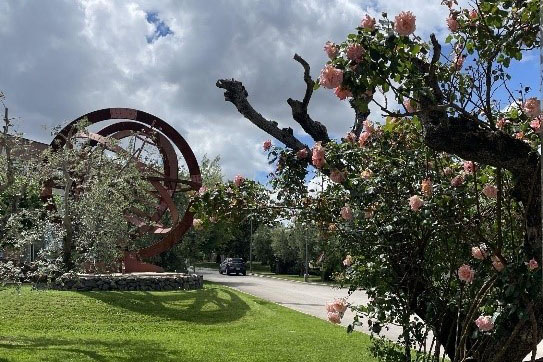
AI and Earth observation: BGS visits the European Space Agency
02/07/2025
The newest artificial intelligence for earth science: how ESA and NASA are using AI to understand our planet.
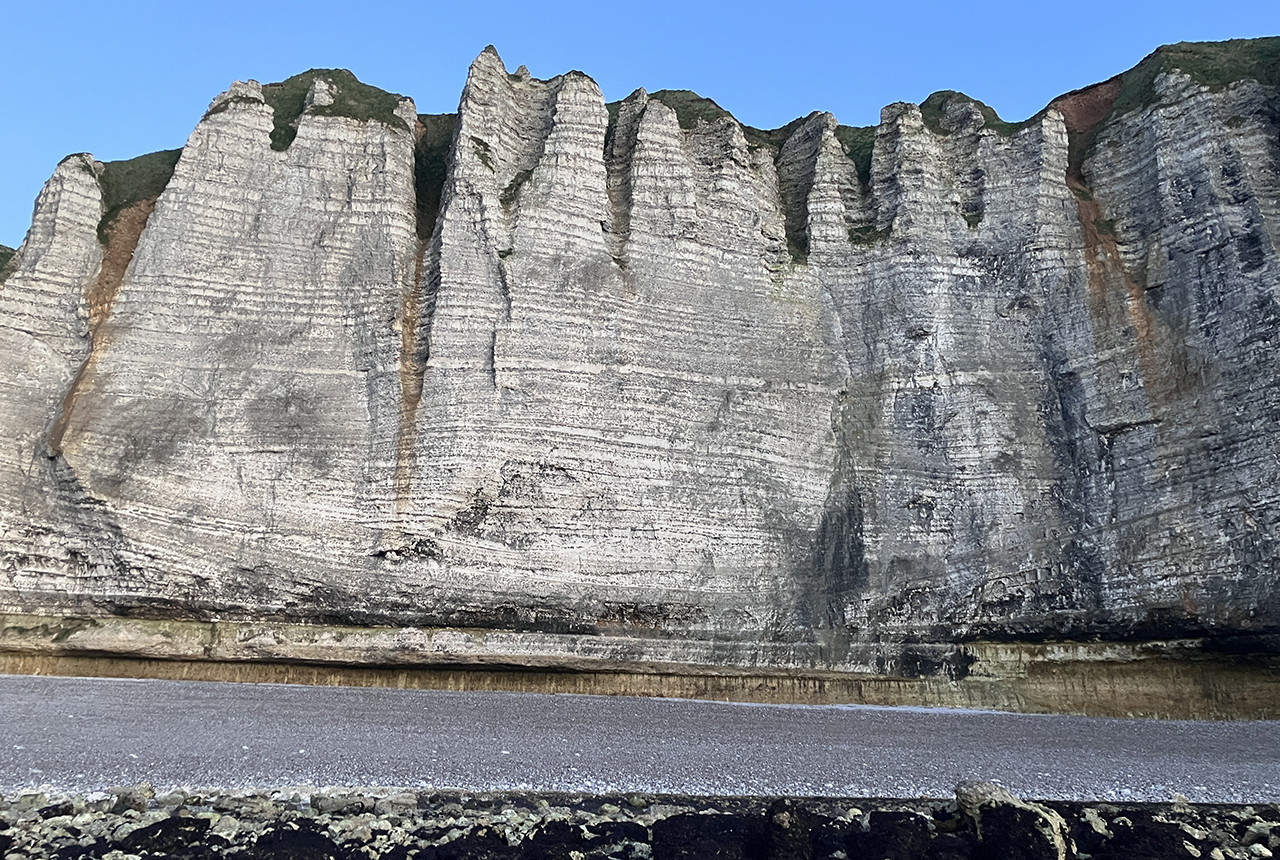
Geology sans frontières
24/04/2025
Geology doesn’t stop at international borders, so BGS is working with neighbouring geological surveys and research institutes to solve common problems with the geology they share.

Celebrating 20 years of virtual reality innovation at BGS
08/04/2025
Twenty years after its installation, BGS Visualisation Systems lead Bruce Napier reflects on our cutting-edge virtual reality suite and looks forward to new possibilities.
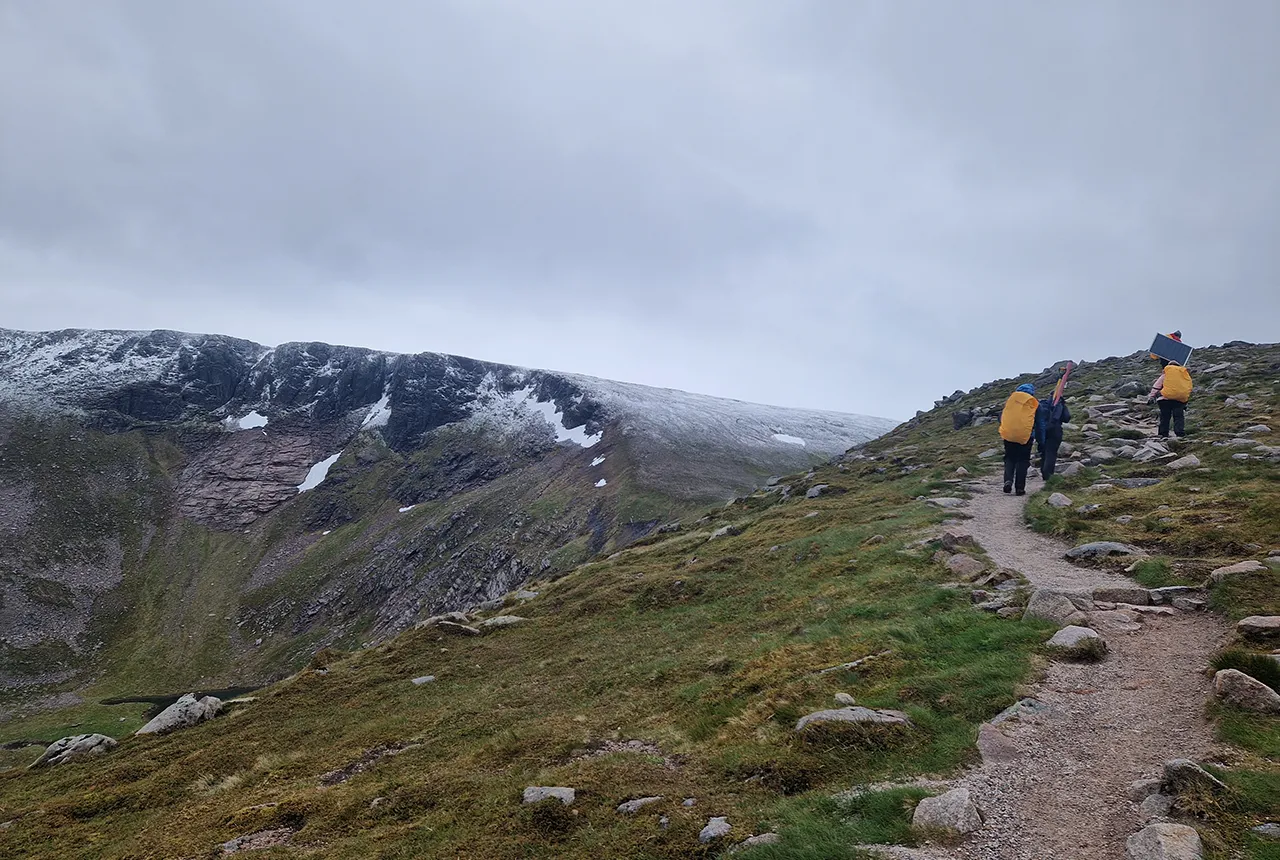
Exploring Scotland’s hidden energy potential with geology and geophysics: fieldwork in the Cairngorms
31/03/2025
BUFI student Innes Campbell discusses his research on Scotland’s radiothermal granites and how a fieldtrip with BGS helped further explore the subject.
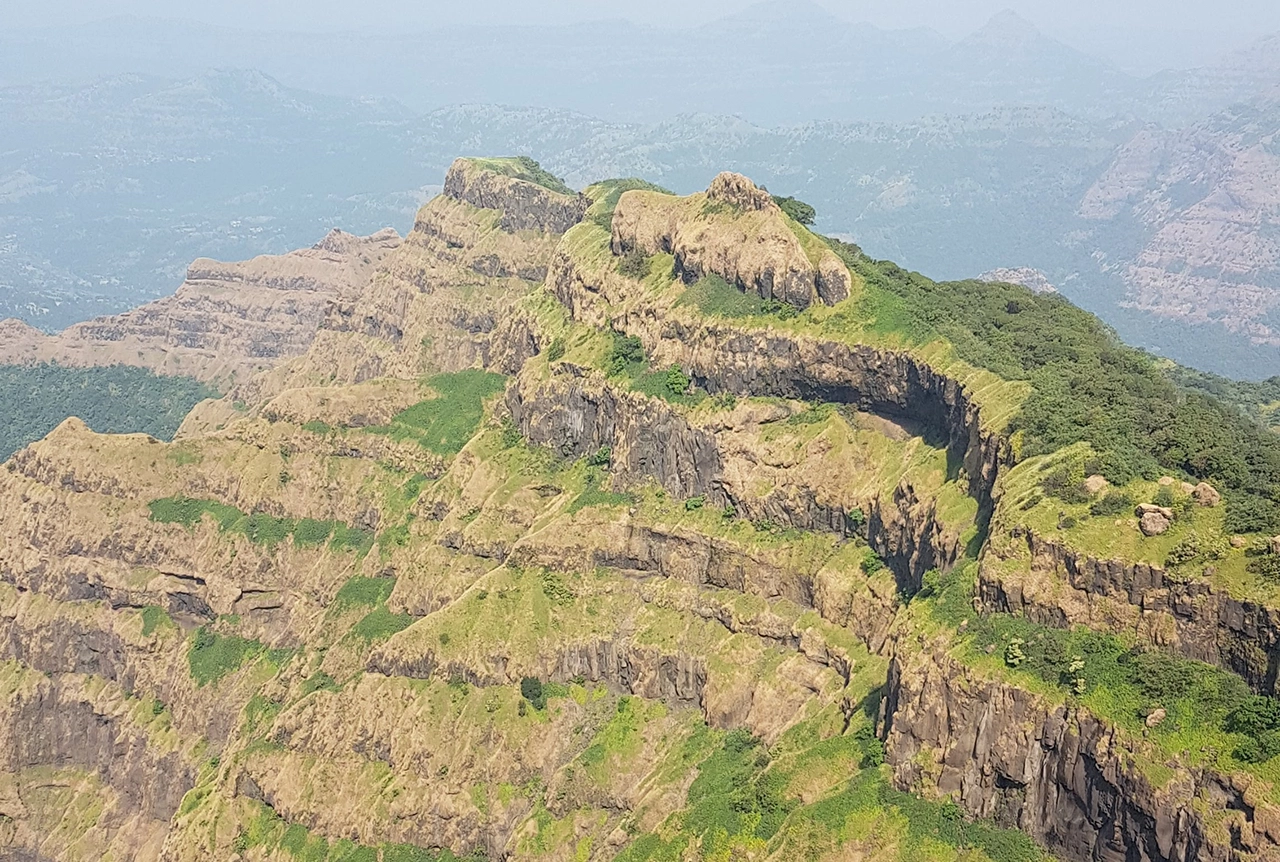
Could underground disposal of carbon dioxide help to reduce India’s emissions?
28/01/2025
BGS geologists have partnered with research institutes in India to explore the potential for carbon capture and storage, with an emphasis on storage.

Carbon and oxygen isotope analysis of carbonates and the development of new reference materials
18/12/2024
Dr Charlotte Hipkiss and Kotryna Savickaite explore the importance of standard analysis when testing carbon and oxygen samples.
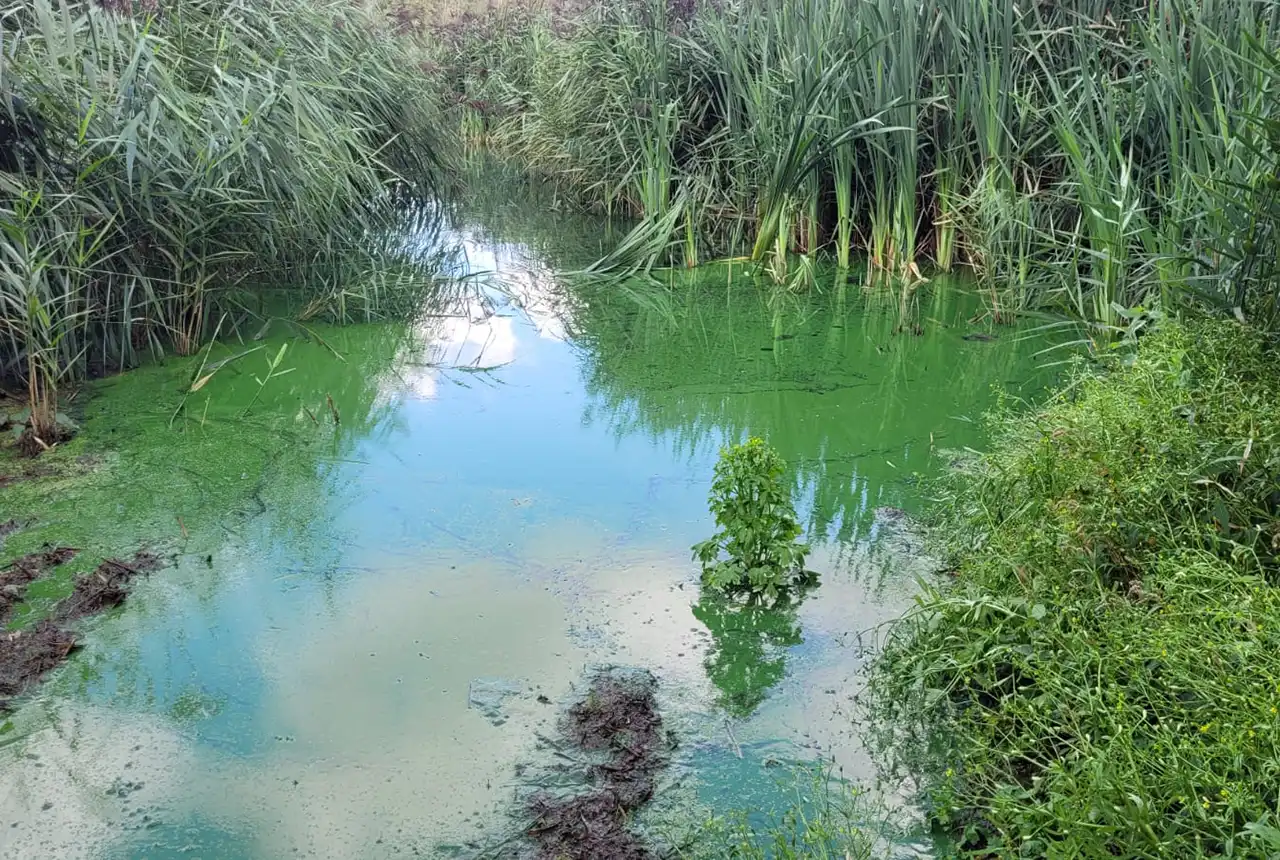
Studying oxygen isotopes in sediments from Rutland Water Nature Reserve
20/11/2024
Chris Bengt visited Rutland Water as part of a project to determine human impact and environmental change in lake sediments.

Celebrating 25 years of technical excellence at the BGS Inorganic Geochemistry Facility
08/11/2024
The ISO/IEC 17025 accreditation is evidence of technical excellence and reliability, and a mark of quality assurance.

Electromagnetic geophysics in Japan: a conference experience
23/10/2024
Juliane Huebert took in the fascinating sights of Beppu, Japan, while at a geophysics conference that uses electromagnetic fields to look deep into the Earth and beyond.

Exploring the role of stable isotope geochemistry in nuclear forensics
09/10/2024
Paulina Baranowska introduces her PhD research investigating the use of oxygen isotopes as a nuclear forensic signature.

BGS collaborates with Icelandic colleagues to assess windfarm suitability
03/10/2024
Iceland’s offshore geology, geomorphology and climate present all the elements required for renewable energy resources.

Mining sand sustainably in The Gambia
17/09/2024
BGS geologists Tom Bide and Clive Mitchell travelled to The Gambia as part of our ongoing work aiming to reduce the impact of sand mining.



